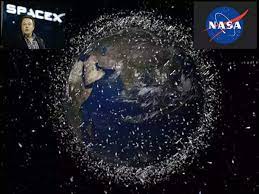NASA flared up on Elon Musk’s 30,000 Starlink satellite, said – this will increase the danger in space

The US space agency NASA has expressed concern over SpaceX’s plan to deploy 30,000 Starlink satellites. SpaceX, the space company of American businessman Elon Musk, had earlier approved the introduction of broadband Internet (Starlink Internet) through 12000 satellites. Now SpaceX has requested for a second generation megaconstellation made up of 30,000 satellites. On this plan of SpaceX, NASA has given a warning on Starlink, saying that deploying so many satellites in low Earth orbit could affect science and human spaceflight missions. NASA has also warned that the deployment of such a large amount of satellites will increase the chances of collision in space manifold. A few days ago, a science satellite of China narrowly escaped from colliding with the debris of a Russian satellite.
Elon Musk sticks to his plan
Elon Musk sticks to the project of deploying 30,000 satellites in space, despite criticism. Critics say that Musk’s plan will clutter up the space. Many satellites launched since the start of the Starlink project have stopped working. They are now moving around like space junk in low Earth orbit. There is a danger of them crashing another spacecraft.
Starlink satellite was saved from colliding with the Chinese space station
In December, China criticized Elon Musk, alleging that its space station Tiangong avoided two subsequent collisions with SpaceX satellites. There are currently three astronauts aboard the Chinese Space Station Tiangong. China had presented some documents in the United Nations, in which information about these possible collisions has been given. In the document, China complained that its space station narrowly avoided a collision with Elon Musk’s Starlink program twice. For the first time this collision was going to happen on July 1 and for the second time on October 21.
NASA appeals to the Federal Communications Commission
NASA has told the Federal Communications Commission that increasing the number of satellites in the Starlink project could increase the incidence of collisions in space. This can also threaten NASA’s science and manned missions. NASA said that currently a total of 25000 objects in low Earth orbit have been tracked, out of which about 6100 objects are below 600 km. SpaceX’s Second Generation expansion could more than double the number of objects tracked in low-Earth orbit. NASA also reported that the mission will increase the number of objects below 600 km by more than five times.
Astronomers also said – problems will increase with so many satellites
Jonathan McDowell at the Harvard-Smithsonian Center for Astrophysics said that we are worried about these large numbers of satellites. These satellites are obstructing astronomical observations. He said that we are already worried about thousands of satellites, now when their number has increased, then our worries will also increase at the same pace.







